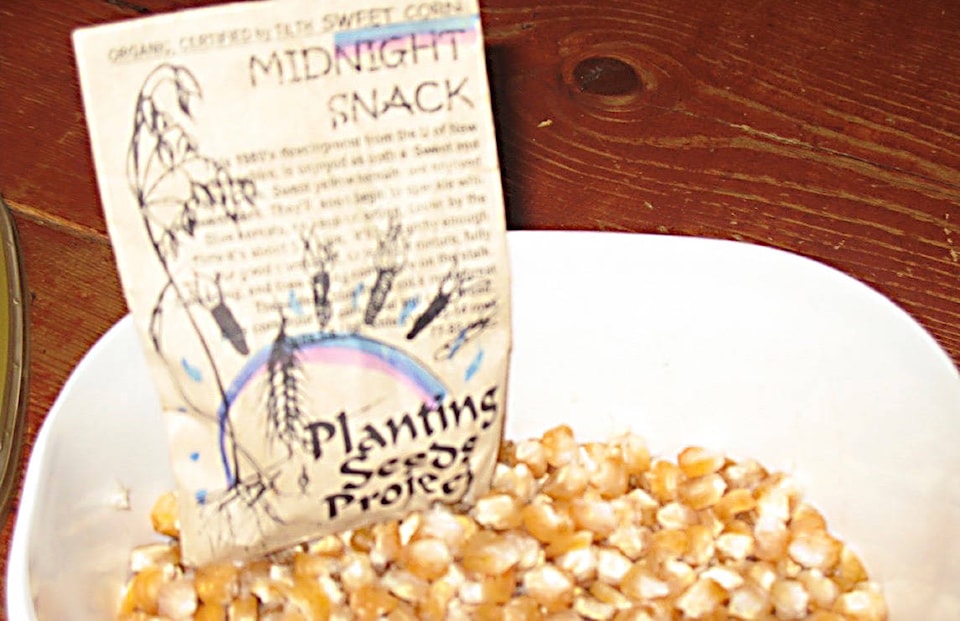We can grow so many crops here that David and I eat like kings. Corn ranks high on the list so I always make room for it. This year I’m trying out author Dick Raymond’s suggestion for getting a jump on the season. He plants seeds directly in the soil a month before the recommended date. Since the recommended date for corn sown outside here is early June, I’ve just sown some of my saved Sunnyvee/Bantam cross.
Raymond says the soil should not have had cover crop, little organic matter and no fertilizer because the seed might die if it grows lushly with extra nutrients at first and then rot because of too much cold rain or frosts.
He plants the seed about 1.5 inches, which is deeper than usual, and then he waits, sometimes for six weeks, before sprouts emerge. He uses an early variety and is eating corn two weeks before anyone else in his area.
I’m planting three batches of corn, two weeks apart for a steady supply, even though this takes up a lot of garden space. When the early corn comes out, there might still be time to plant a fall or overwintering crop. Corn pollinates and produces ears more thoroughly when grouped together so I plant in rows side by side. I sow seed eight to 10 inches apart in rows that are two feet apart, oriented north to south so they don’t shade other plants.
When Raymond plants corn, he digs a long trench, places the seeds at the bottom and covers them with a bit of soil, not filling in the trench. He unrolls a length of chicken wire to cover the whole bed to keep birds out. By the time the corn reaches the chicken wire, he pulls it off and starts filling in the trench.
The corn will have become firmly rooted, preventing birds from pulling them out.
I plant a winter squash at both ends of the bed and encourage them to skirt the outside of the corn to keep out varmints, and to prevent earwig damage. Gardening authors recommend placing a drop of vegetable oil on the silks as they start to appear. Corn roots grow close to the surface of the ground so weed shallowly, but keep weeds down. When the corn reaches eight inches, I spread organic fertilizer alongside each row and hoe that in a bit. This is called side dressing. I lay soaker hoses alongside each row, water the corn for half an hour, twice a week, and cover the soil with mulch because our summers are so hot and dry.
Corn produces side shoots called suckers and studies have shown that corn develops better when these suckers aren’t removed. If these suckers produce ears, Raymond suggests using them for seed and just eating the larger cobs that grow on the main stalk.
Corn requires a lot of nutrients, so I spray with compost tea every two to three weeks and side dress with more organic fertilizer when silks first appear on the cobs.
After harvest, I break up some of the stalks into four foot lengths and crisscross two layers of them at the bottom of my fall compost heap to allow upward air flow. I chop up the rest into six inch lengths and compost them either by digging them under or tossing them into the compost heap.
Please contact mary_lowther@yahoo.ca with questions and suggestions since I need all the help I can get.
